25+ SAMPLE Construction Lien Form
-

Construction Lien Template
download now -
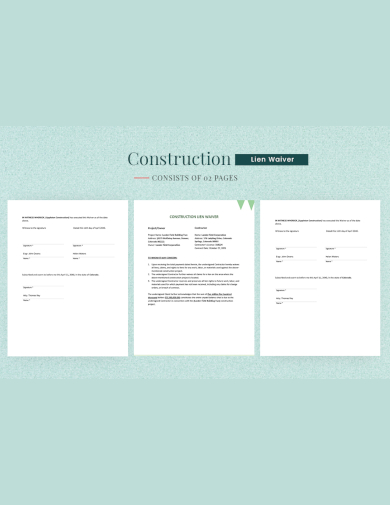
Construction Lien Waiver Template
download now -

Lien Waiver Form Template
download now -
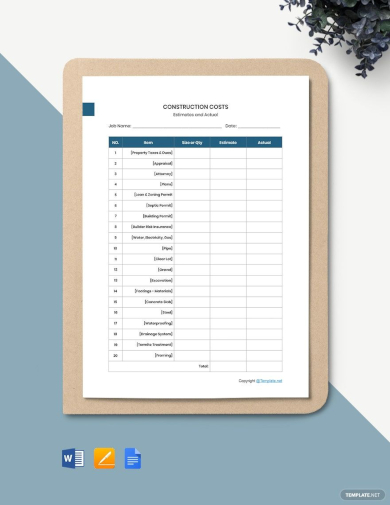
Sample Construction Form Template
download now -
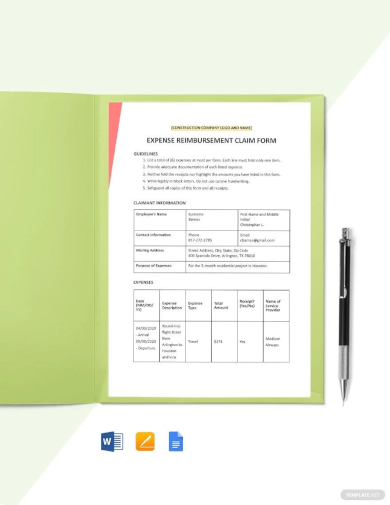
Construction Expense Claim Form Template
download now -
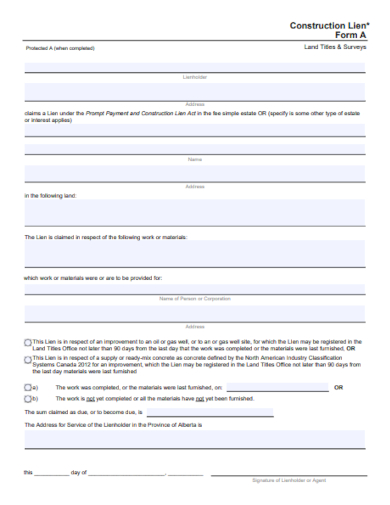
Construction Statement of Lien Form
download now -

Construction Lien Law Affidavit Form
download now -

Construction Lien Form
download now -
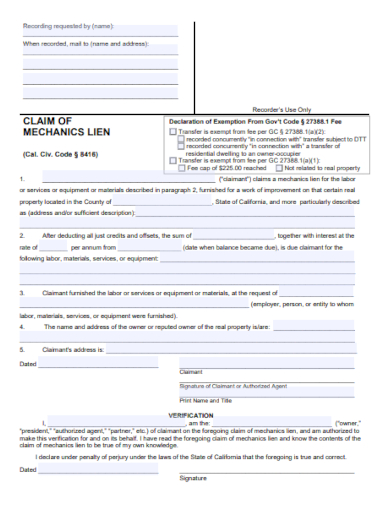
Construction Mechanics Lien Form
download now -

Sample Construction Lien Form
download now -
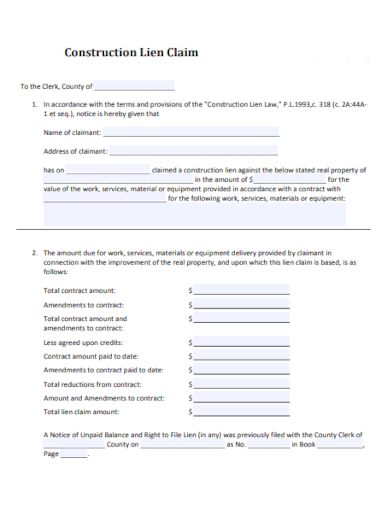
Construction Lien Claim Form
download now -
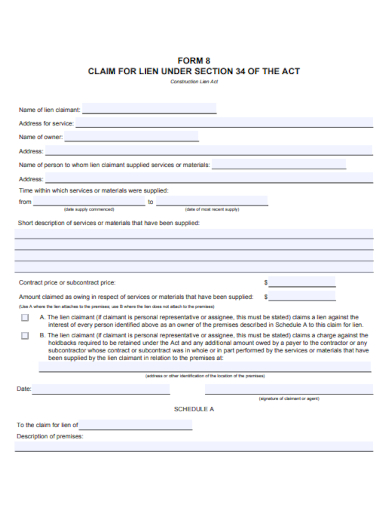
Construction Claim for Lien Form
download now -

Construction Lien Checklist Form
download now -
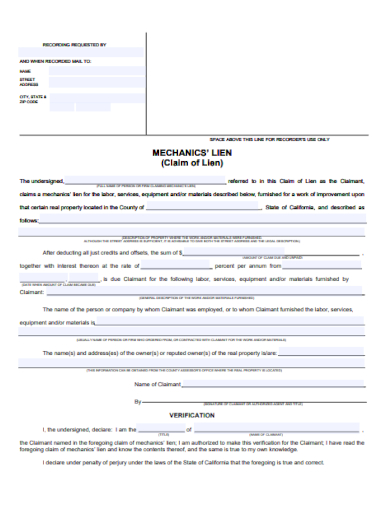
Construction Mechanics Claim of Lien Form
download now -
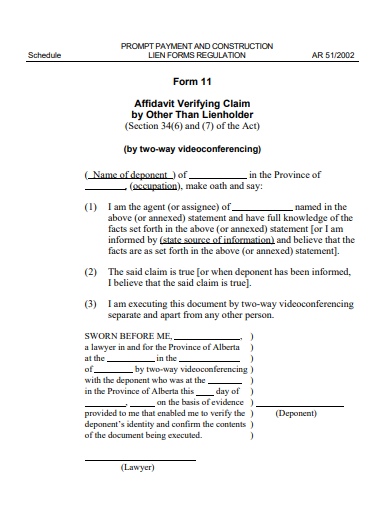
Construction Payment Lien Form
download now -
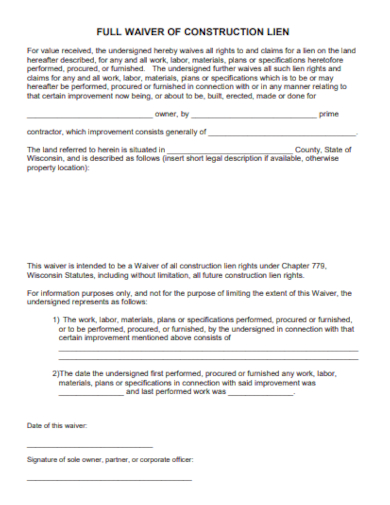
Waiver of Construction Lien Form
download now -
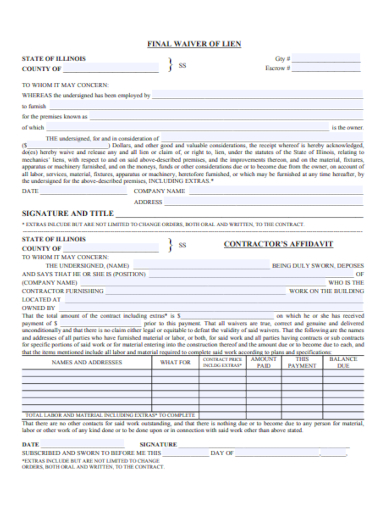
Final Waiver of Construction Lien Form
download now -
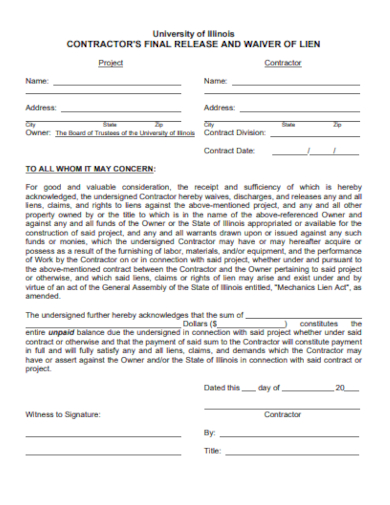
Contractor Release Waiver of Lien Form
download now -
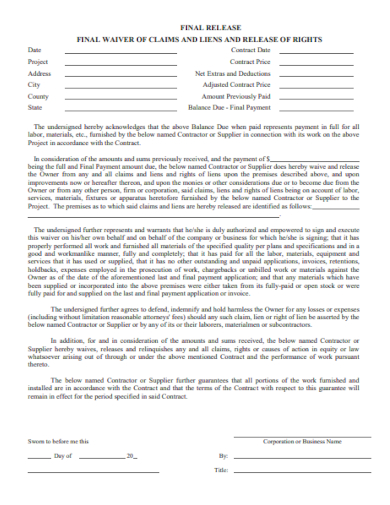
Final Construction Release of Lien Form
download now -
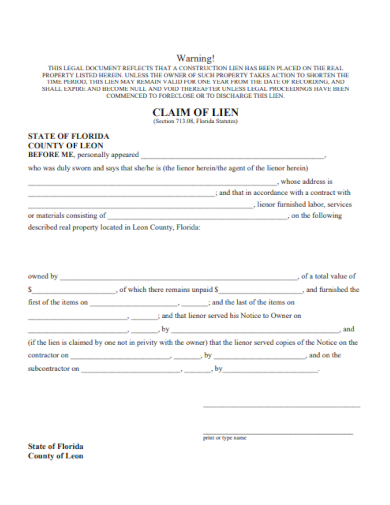
Sample Construction Claim of Lien Form
download now -
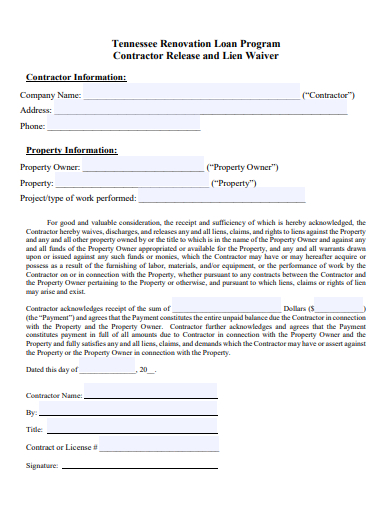
Contractor Release and Lien Waiver Form
download now -
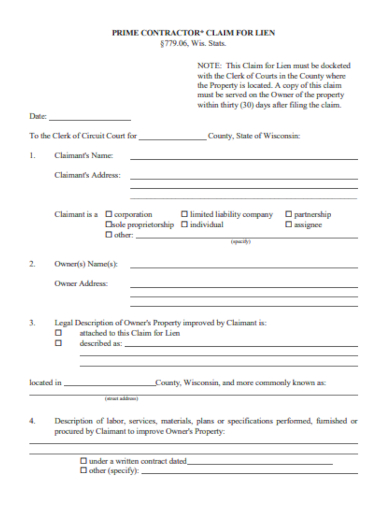
Construction Contractor Claim for Lien Form
download now -
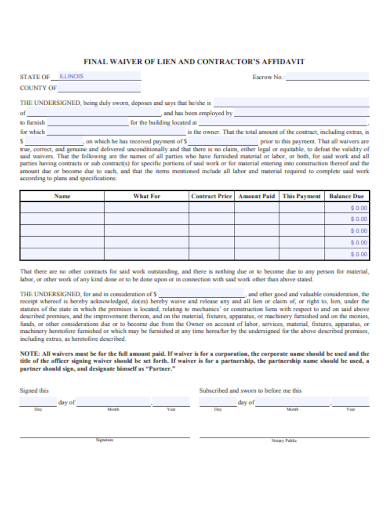
Construction Contractor Waiver of Lien Form
download now -
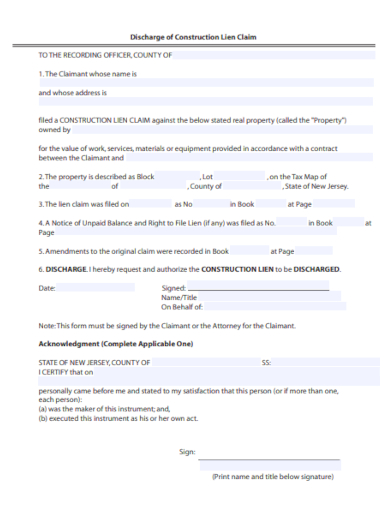
Discharge of Construction Lien Claim Form
download now -
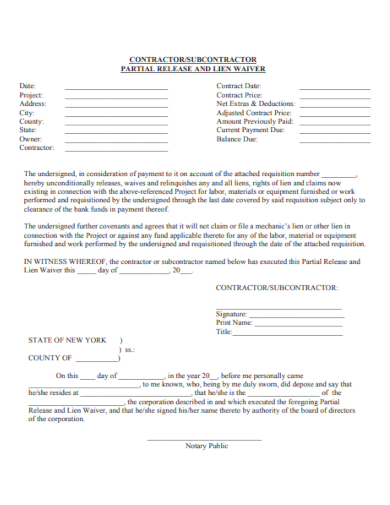
Construction Contractor Partial Release Lien Form
download now -

Notice for Construction Lien Claim Form
download now
FREE Construction Lien Form s to Download
25+ SAMPLE Construction Lien Form
Definition:
Understanding the Construction Lien Form:
Purpose of a Lien Form:
Process of Filing a Lien:
Key Components of a Lien Form:
Rights and Limitations:
Incorporating Digital Solutions:
How can a properly filed construction lien form secure payment for construction work?
What measures are taken to ensure that lien claims are accurate and valid?
Can a construction lien form be used for both residential and commercial construction projects?
Why should contractors and subcontractors keep detailed records when filing a lien?
What role does the lien form play in negotiations for payment resolution?
Definition:
A Construction Lien Form is a legal document filed by contractors or suppliers, asserting a claim against a property they’ve provided services or materials to, but haven’t received payment for. It ensures they have a security interest in the property until compensated, safeguarding their rights and ensuring property owners adhere to agreed-upon financial obligations.
Understanding the Construction Lien Form:
When delving into the world of construction, ensuring payment for services rendered or materials supplied is paramount. The Construction Lien Form acts as a protective measure for those in the industry. Construction projects involve multiple stakeholders, from property owners to subcontractors. Amidst this web of transactions, ensuring payment for services or materials supplied becomes paramount. Here’s where the construction lien form comes into play.
Purpose of a Lien Form:
A Construction Lien Form isn’t just a piece of paper; it’s a powerful legal tool. Its primary aim is to provide a safety net for contractors, subcontractors, and suppliers against non-payment. By placing a lien on a property, these entities can claim a right over it until their dues are cleared.
- Secure Payment: The most fundamental purpose of the lien form is to ensure that contractors, subcontractors, and suppliers are compensated for the work done or materials provided. If payments aren’t made as agreed, the lien serves as a legal tool to recover the owed funds.
- Legal Claim on Property: The lien places a legal claim on the property in question until the debt is cleared. This acts as a form of collateral, ensuring that those who’ve contributed to the project are prioritized in terms of payment.
- Prevent Property Sale or Refinancing: With a lien attached to a property, the owner cannot easily sell or refinance it. This applies pressure on the property owner to settle any outstanding debts to clear the property title.
- Evidence of Debt: The lien form provides a documented, formal proof of the amount owed and the nature of the work or materials for which payment is pending. This can be crucial if disputes escalate to legal proceedings.
- Encourage Prompt Payment: The possibility of a lien acts as a deterrent, encouraging property owners to make timely payments to avoid the complications and legal implications of a lien.
Process of Filing a Lien:
The procedure may vary slightly based on jurisdiction, but typically, it involves:
Gathering Necessary Information:
Before initiating the lien process, it’s imperative to gather all pertinent details. This includes the property description, names of property contract details, and the exact amount owed. Keeping meticulous records throughout the construction project is crucial to ensure accuracy.
Sending a Preliminary Notice:
Many jurisdictions require contractors and suppliers to send a preliminary notice at the project’s onset or within a specified time frame. This informs the property owner, prime contractor, and other relevant parties about your involvement in the project and your right to file a lien if unpaid.
Completing the Lien Form:
Fill out the construction lien form meticulously, ensuring all details are accurate. Any inaccuracies or omissions can jeopardize the lien’s enforceability.
Serving Notice of the Lien:
After filing, you must notify the property owner about the lien, typically within a stipulated period. This can be done via certified mail, ensuring you have a record of the delivery.
Enforcing the Lien:
If payment isn’t made after filing the lien, the next step is to enforce it by initiating a foreclosure lawsuit against the property. This must be done within a specific timeframe, or the lien will expire.
Releasing the Lien:
Once you receive payment, it’s your responsibility to release the lien promptly. This involves filing a lien release form at the same county office where the original lien was recorded.
Key Components of a Lien Form:
Every Construction Lien Form typically contains:
Claimant’s Information:
This section identifies the individual or entity making the lien claim. It usually includes the name, address, and contact details of the claimant. If the claimant is a business, it may also specify the type of business entity (e.g., LLC, corporation).
Property Owner’s Information:
Detailed information about the property owner, including their full name, address, and sometimes other contact information. This helps to unmistakably identify the owner of the property on which the lien is being placed.
Description of Labor or Materials Provided:
A comprehensive breakdown of the labor, materials, services, or equipment supplied to the project. This section can be detailed, highlighting dates of service, types of materials used, and the nature of the work performed.
Property Description:
A thorough description of the property subject to the lien. This usually includes the property’s physical address, legal description, and parcel or lot number. Accurate identification ensures that there’s no ambiguity about the property in question.
Contractual Amount and Outstanding Amount:
This section lists the original contract amount, any payments made, and the outstanding amount that’s being claimed through the lien.
Dates of Work:
Specific start and end dates of when the work was performed or when materials were supplied. This is crucial in establishing the timeline, especially given the time-sensitive nature of lien filings.
Statement of Claim:
A clear statement that explains the basis of the claim. This can be a narrative that outlines the agreement, the work done, the expected payment, and how the payment has been breached.
Sworn Statement and Notary Acknowledgment:
Many jurisdictions require the claimant to attest to the truthfulness and accuracy of the information provided in the lien form. This section would have a statement sworn under penalty of perjury, followed by a notary public’s acknowledgment, ensuring the claimant’s identity.
Rights and Limitations:
While the lien form offers protection to contractors and suppliers, it’s not an absolute right. There are often strict time frames within which one needs to act. Additionally, the amount claimed can’t exceed the unpaid amount. Property owners also have rights, including contesting an unjust lien.
Lien Claimant’s Rights:
- Priority Over Other Creditors: Once a construction lien is filed, the lien claimant often has priority over subsequent creditors concerning the property. This means in case of a sale or foreclosure, the lien holder may get paid before some other creditors.
- Right to Enforce Payment: If the debt remains unpaid, the lien claimant has the right to enforce the lien, which could lead to a sale of the property to satisfy the owed amount.
- Security for Unpaid Work: A construction lien ensures that the claimant has a secured interest in the property equal to the unpaid amount, making it more likely they’ll receive payment for their work.
- Legal Recourse: If there are disputes regarding payment or the validity of the work, the claimant has the right to legal recourse, which the lien can support.
Lien Claimant’s Limitations:
- Strict Filing Deadlines: Lien claimants must adhere to strict timelines when filing a lien. Missing a deadline, even by a day, can invalidate the lien.
- Limited to Contractual Amount: The claimant cannot claim more than what was agreed upon in the original contract. Overstating a claim can lead to penalties or the lien being thrown out.
- Limited Duration: Liens don’t last indefinitely. If a lien claimant doesn’t enforce their lien within a specific period (which varies by jurisdiction), the lien can expire.
- Requirement for Accurate Information: Any inaccuracies or false statements in the lien can lead to its invalidation. It’s imperative to ensure that all provided information is accurate and truthful.
- Possible Counterclaims: The property owner or other involved parties might challenge the lien. If the lien is deemed frivolous or unjust, the claimant might face penalties or be liable for the other party’s legal costs.
- Release Upon Payment: Once payment is made or a resolution is achieved, the claimant is obligated to release the lien promptly. Failure to do so can result in penalties.
Incorporating Digital Solutions:
With technological advancements, many regions now allow e-filing of liens, making the process swifter and more efficient. It also ensures accurate time-stamping, crucial given the time-sensitive nature of lien filings.
Efficiency in Lien Management:
With the rapid growth of technology, managing liens has never been more efficient. Digital solutions enable easy tracking, monitoring, and managing of lien timelines, ensuring that no critical deadlines are missed.
Secure Data Storage:
Digital platforms offer secure cloud storage solutions, ensuring that all lien-related documents are safely stored, easily retrievable, and protected from data breaches or loss.
Automated Notifications:
One of the significant advantages of digital solutions is the ability to send automated notifications. These can remind lien claimants of upcoming filing deadlines or alert them to any changes in the lien status.
Electronic Filing:
Many jurisdictions now accept electronic filing (e-filing) of liens. This speeds up the filing process, eliminates the need for physical paperwork, and reduces manual errors.
Digital Signatures:
With the rise of digital solutions, the acceptance of digital signatures has grown. This feature speeds up the approval process, ensuring that lien forms are authenticated and legally binding without the need for face-to-face interactions.
Integration with Other Systems:
Many digital lien solutions can integrate seamlessly with other software systems, such as accounting or project management tools. This ensures a streamlined workflow, where data can easily be transferred between platforms, reducing manual data entry and errors.
Analytics and Reporting:
Modern digital solutions offer robust analytics and reporting features. These can provide insights into patterns, such as common reasons for liens or the average duration to resolve them, helping businesses make informed decisions.
How can a properly filed construction lien form secure payment for construction work?
A properly filed construction lien form legally binds the property as collateral for unpaid construction work, ensuring contractors and suppliers have a claim to the property’s value if unpaid. This creates leverage, prompting owners to prioritize and settle payment to release the lien.
What measures are taken to ensure that lien claims are accurate and valid?
To ensure lien claims are accurate and valid, strict procedural guidelines are followed. These include verifying work documentation, ensuring timely notice, adhering to filing deadlines, and validating the claim amount. Disputes are addressed in legal venues, and penalties deter fraudulent or exaggerated claims.
Can a construction lien form be used for both residential and commercial construction projects?
Yes, a construction lien form can be used for both residential and commercial construction projects. It serves as a legal tool to secure payment for work performed or materials supplied, regardless of the project’s scale or nature. Proper filing procedures must be followed for each type.
Why should contractors and subcontractors keep detailed records when filing a lien?
Contractors and subcontractors should keep detailed records when filing a lien to provide clear evidence of work done or materials supplied. Accurate records ensure the legitimacy of the lien, prevent disputes, and expedite resolution in case of non-payment or disagreements with property owners.
What role does the lien form play in negotiations for payment resolution?
The lien form serves as a formal assertion of payment claims, prompting property owners to prioritize resolution. It signifies the seriousness of the contractor’s or subcontractor’s intent, often facilitating faster negotiations and encouraging mutually beneficial settlement discussions between involved parties.
In summation, the Construction Lien Form serves as a pivotal legal safeguard in the construction realm, ensuring contractors and professionals are rightfully compensated. By bridging gaps in trust and payment disputes, this instrument reinforces transparency and accountability. Integrating such mechanisms elevates industry standards, underlining the necessity for clear agreements and the importance of fulfilling financial obligations in construction venture agreements.
